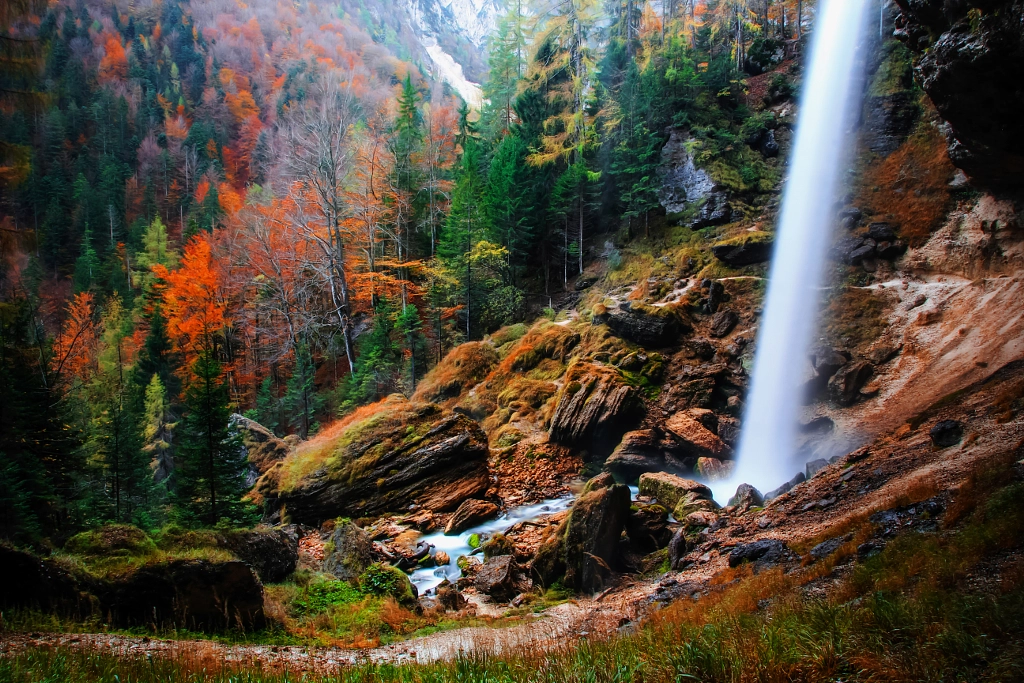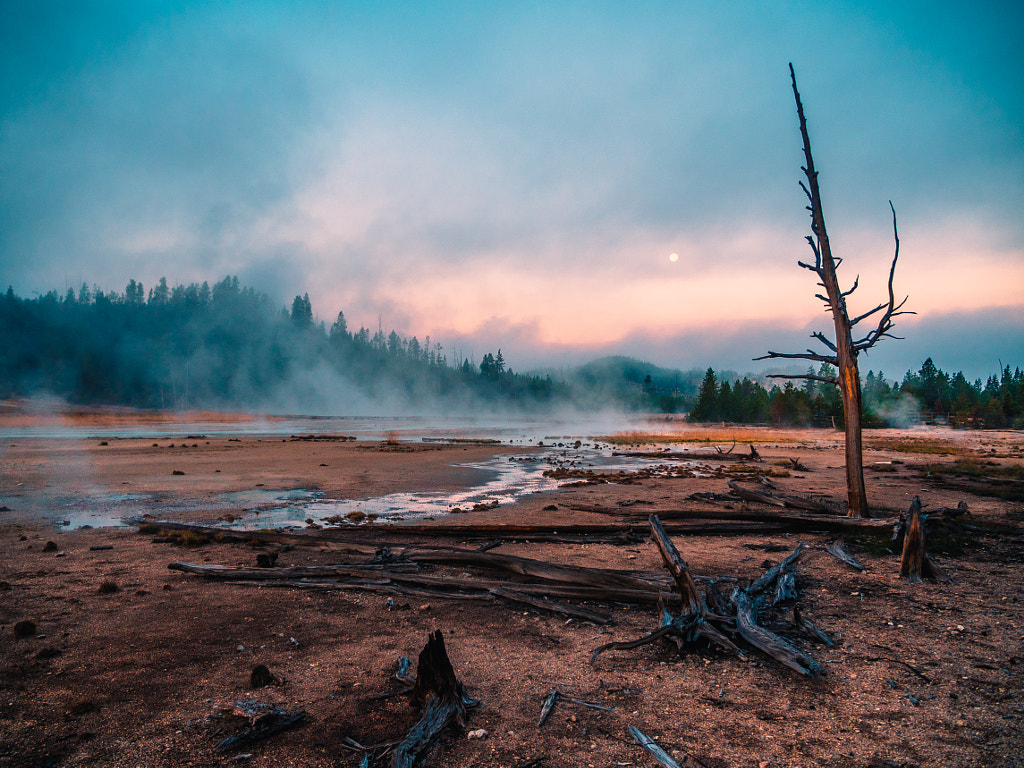checklist of 27 things you shouldn’t forget if you are into landscape photography
Did it happen to you that when arriving at the place to capture a landscape, you forgot to prepare something or take it with you? A photographer Tom Bonsju has created a detailed list, that should be checked every time before you go to shoot landscape photos.
In the places where I was born, there is a good statement: "A clever man writes down, and a fool tries to remember." I think that it's better to have a checklist, especially if you have to keep in your mind a lot of things at the same time. And it's better to keep it close during the shooting and when you return home.
1. Check batteries and memory cards. If you don't want to get to the place and notice that batteries are almost discharged, and you don't have enough space on your memory card. So before leaving try to check your batteries and take additional memory cards that have enough free space on them. Moreover, you should check other equipment, for example, a remote controller, as you will use it during the shooting.
2. Clean the lenses. Before leaving it's better to check if your lenses are clean, and if necessary, clean the lenses that you are going to take with you.
3. Check camera lens filters. The same is with the filters. Various stains on lens filters can spoil your shot, and perhaps you won’t notice it until you return home.
4. Make sure that a tripod is steady and fixed. Sometimes the legs of a tripod are a little bit shaky, so you should take a screw key and fix them. It's better to do this at home not to spend time when you arrive at the place.
5. Make sure that a tripod platform is in its place. Before leaving make sure that a tripod platform is fixed on a tripod or the camera. You have to be sure where it is exactly, not expecting it to be on a tripod if you haven't noticed it on your camera.
6. Check the weather forecast. It seems logical, but some people forget about it. It's important to check the weather forecast before leaving, so you can be prepared for any weather conditions and plan your shooting accordingly.
7. Comfortable clothes. As you need the right and trustworthy equipment for landscape photography, so you need the right clothes. Be sure to put on something comfortable, depending on the weather conditions, and take something else that can protect you against rain, cold, heat, etc.
8. Take something to drink. You should always have something to drink (water, juice, etc.). It’s not healthy to stay thirsty, especially when there is a whole day of shooting ahead. Take enough drinking water if it’s summer and hot tea if it’s winter.
9. Take something to eat. It’s not fun to take photos when you are hungry. Landscape photography often includes long walks and riding a bicycle, so you should have enough strength for that.
10. Be ready to spend some extra time. Plan your trip so you can spend some extra time. It's better to come earlier and wait a little bit than to be late and lose your chance. Route planner app like route4me is a great resource for finding the perfect route for your trip.
11. Take a folding chair. It is nice to have a small folding chair at hand. Landscape photography can take a lot of time, and it's better to have a chair than to sit on the ground or some stone. It's especially important when it's raining or snowing.
12. Choose the lenses you should take with you. Before leaving you should think it over. Don't overload yourself, take only the equipment you will use. For example, you won't need flashes or portrait lenses for landscape photography. A wide-angle zoom lens will be enough.
13. Check the battery. Check the battery charge of your mobile phone and charge it if necessary. As far as landscape photography takes quite a lot of time, and sometimes you need to go to some remote places, your mobile phone can be the only means of communication that can connect you to other people. So make sure it works well, and its battery is full. And a portable charger is a good solution in such situations.
14. Check ISO settings. It seems stupid, but such a mistake sometimes happens. You can occasionally shoot at high ISO, and in some cases, you will not be able to change the shots. Unfortunately, almost everyone has faced the same trouble when shooting at high ISO occasionally.
15. Check the white balance. Everyone knows that you can always adjust the white balance when processing RAW files. But why spend some extra time, if you can avoid it? So, before you take a picture, try to choose the right settings.
16. Define the object of shooting. Think about the composition and the object of your shooting before taking the next photo. Don't be in a hurry.
17. Decide what type of lens you need. When you have chosen what are you going to shoot, it's time to decide what type of lens will be the best.
18. Check the horizon line. Before taking a photo make sure that the horizon line is in the right place. Obviously, an image can be adjusted during post-processing, but if you do it at once, you will save time during the post-processing.
19. Check the frames of your shot. Check the frames of your shot, before pressing a shutter button. Think again about what you can exclude from your shot and what you can add. What is important in your shot and what spoils the picture should be avoided.
20. Try different angles, compositions, and camera orientations. Digital photography allows us to take a lot of shots, so use this opportunity to your advantage. Make different shots of the same object, changing angles, composition, and camera orientation.
21. Check sharpness making your image larger. Maybe it's not the best idea to check every shot on the screen of your camera, but in some cases it’s OK. Landscape photography is exactly such a case. There are no rapidly changing events here or some unique episodes that will not repeat. So, you can check all your shots. It could be said that it's preferable to do so in landscape photography. Thus you will be sure, that all the chosen objects are in focus and while checking your photos on your monitor at home, you won’t face any unpleasant surprises.
22. Use a Mirror lock-up mode. Obviously, such a mode on mirror cameras will allow you to get clearer and sharper shots.
23. Use a remote controller. You should make everything possible to prevent a camera shake, and a remote controller will help you with this. No matter whether it is wired or wireless.
24. Don't forget to make a backup when returning home. After a photo session doesn't forget to make a backup of your material. Don't be too lazy and leave them on your memory card. You never know what may happen.
25. Look through your photos and choose the best shots. When your journey is over, it may quite bore some to look through hundreds and thousands of photos. But as you return home it's important to mark the best shots, so you could later work on them, not losing your time processing every shot.
26. Recharge your camera and smartphone batteries. If you have a pre-planned photo session that will happen the next day, it's better to recharge all your devices that you will use tomorrow.
27. Prepare the equipment and devices for tomorrow. And the last but not the least what you should do when returning home is to prepare yourself for the next day. It's better to get ready beforehand, instead of packing all your thing the very last moment in a hustle.
So, it was the check list that should be checked before, during and after the landscape photography. It is a rather detailed list that includes all you may need. Is there anything else you would like to add?

















